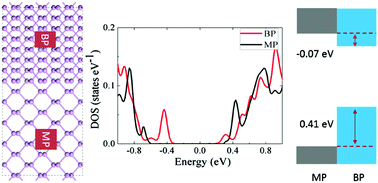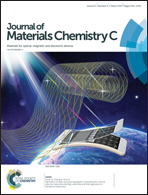2D lateral heterostructures of monolayer and bilayer phosphorene†
Abstract
A recently discovered layered semiconducting material, namely, black phosphorus, has a bandgap that depends on the number of layers. It is thus feasible to create lateral heterostructures using the same material with different thicknesses. The structural and electronic properties of the lateral heterostructures of bilayer and monolayer phosphorene (BP/MP) are investigated by first-principles calculations. Hydrogen passivated heterostructures have much lower formation energy when compared to unpassivated heterostructures or phosphorene grain boundaries. The electronic band structures of the heterostructures with and without hydrogen passivation are greatly dependent on interface orientation and exhibit three distinct families of characteristics: direct bandgap semiconductor, indirect bandgap semiconductor and metal. Additionally, a type-I to type-II band alignment transition takes place when the ribbon widths of the BP and MP regions decrease, enabling continuous modulation of the band offset. The magnitude of the band offset can also be effectively tuned by changing the stacking type of BP and the interface orientation. These theoretical findings would be helpful in the design and optimization of BP/MP heterostructures for electronic and optoelectronic applications.



 Please wait while we load your content...
Please wait while we load your content...